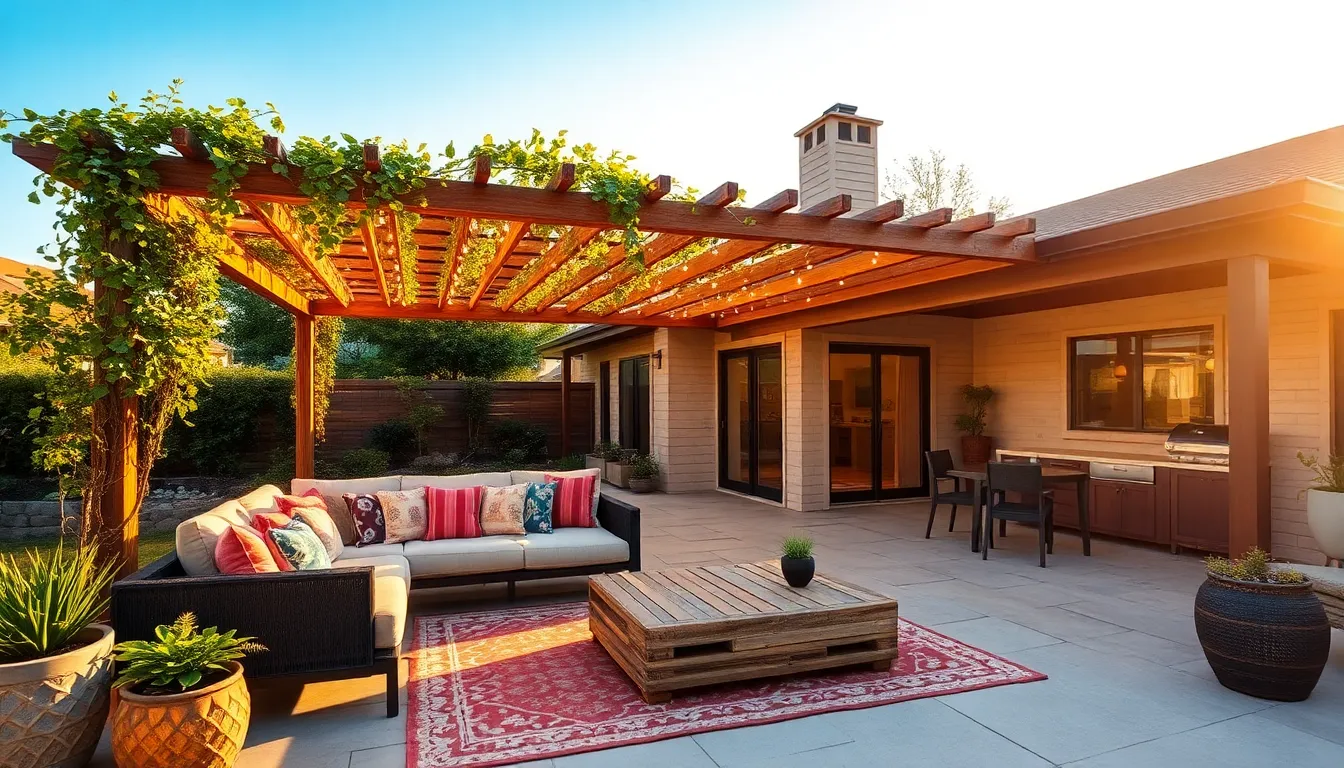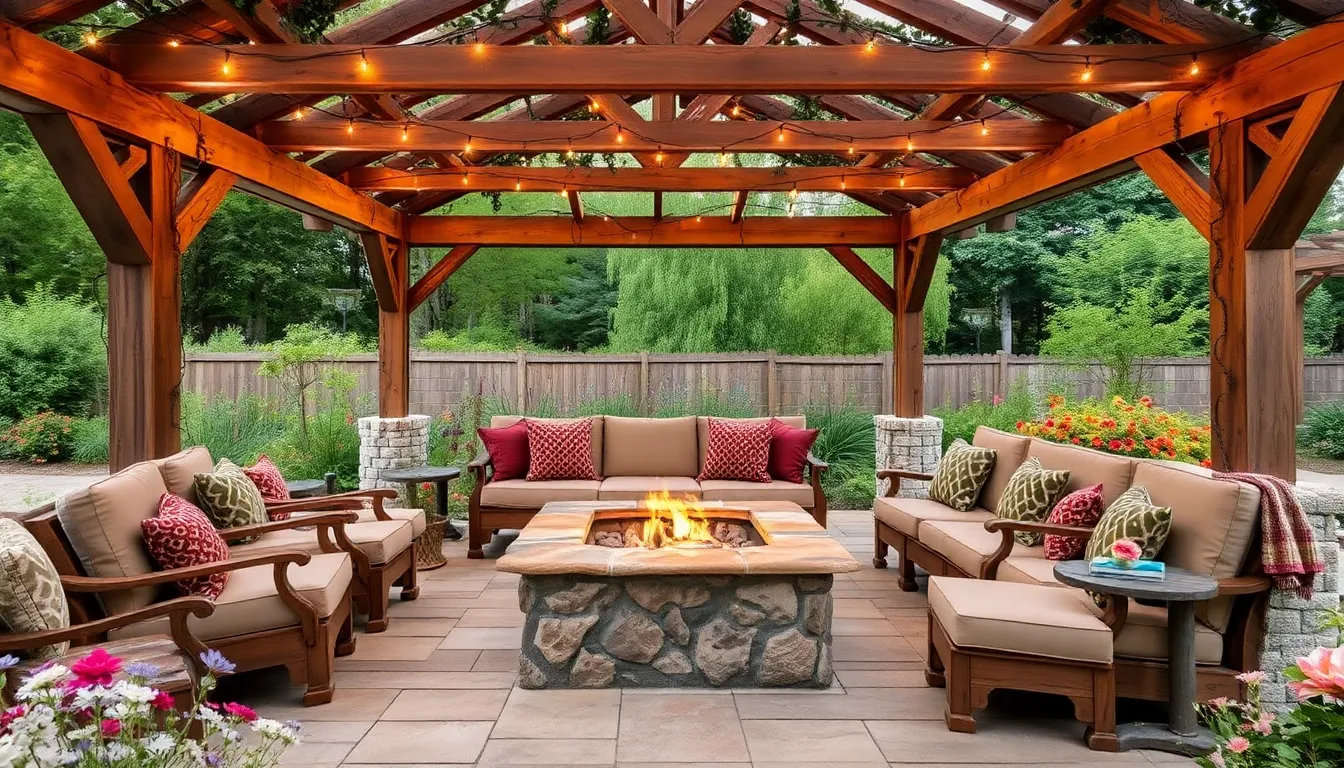Winter is no reason to retreat indoors and abandon your beloved patio space. With the right roof design, your outdoor living area can become a cozy extension of your home, offering warmth and protection from the elements. Whether you’re a novice just dipping your toes into outdoor design or a seasoned homeowner looking to upgrade, the perfect winter-proof patio roof can transform your space into a year-round haven.
In this article, you’ll discover ten innovative roof designs that blend style with functionality, ensuring your patio stays inviting even in the chilliest months. From sleek, modern solutions to rustic, charming options, each design is crafted to withstand winter’s challenges. Prepare to be inspired as we explore practical ideas that bring comfort and beauty to your outdoor sanctuary, making it a cherished retreat no matter the season.
Choosing Durable Winter-Ready Materials
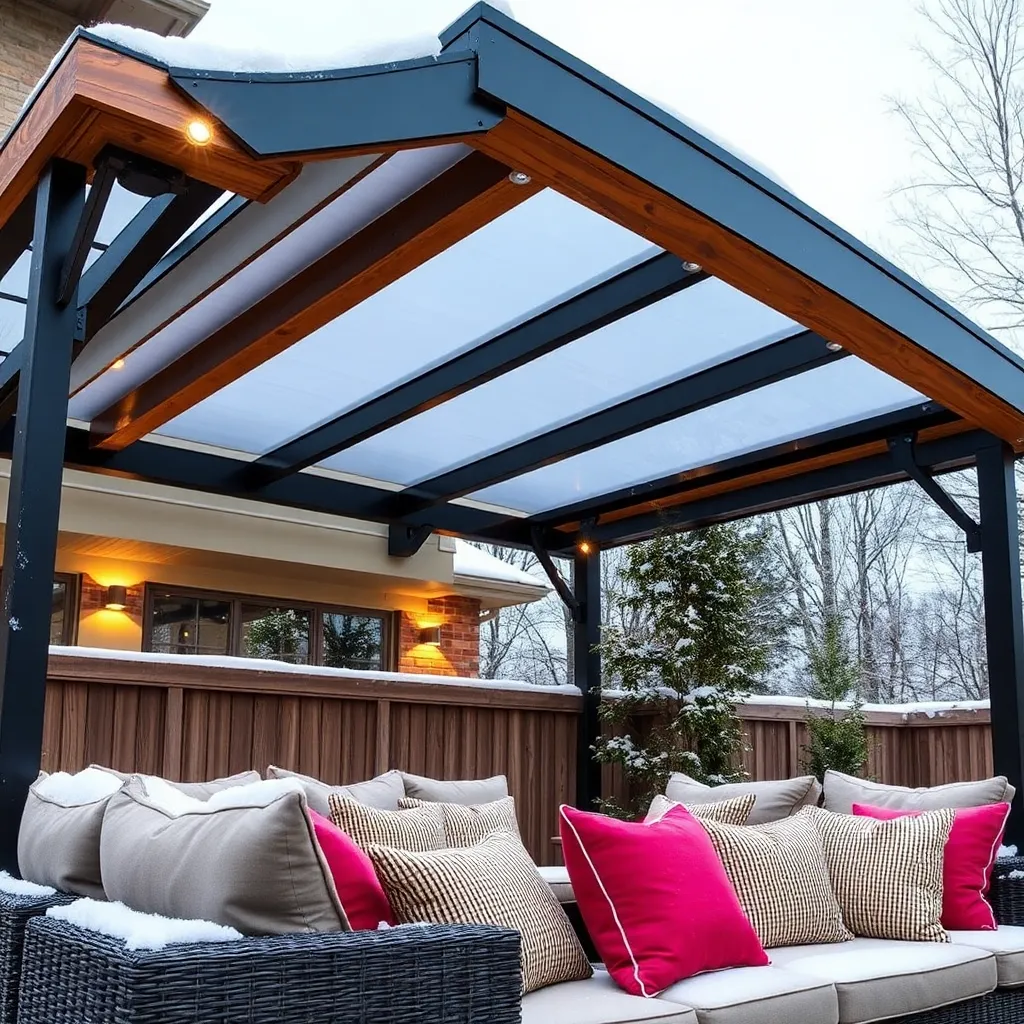
When selecting materials for a winter-ready patio roof, focus on those that offer both durability and insulation. Polycarbonate panels are an excellent choice due to their high impact resistance and ability to withstand snow loads. For a more traditional look, consider treated wood with a weather-resistant finish to prevent rot and decay. Ensure the framework can support additional weight by using reinforced beams; this is especially crucial in regions prone to heavy snowfall.
For added warmth and protection, incorporate design elements like insulated panels or thermal curtains that can be adjusted as needed. Beginners might start with a simple A-frame design for its slope, which helps shed snow easily, while more advanced DIYers could opt for a gabled roof that provides extra headroom and architectural interest. Whatever design you choose, make sure to include drainage systems such as gutters to direct melting snow away from your patio area, maintaining its integrity throughout the winter months.
Incorporating Insulated Patio Covers

Incorporating insulated patio covers is an excellent way to extend the usability of your outdoor space during the winter months. Insulated panels are a popular choice because they provide both thermal protection and sound insulation. For a basic setup, consider using aluminum panels filled with a high-density foam core. These panels are lightweight, durable, and relatively easy to install, making them ideal for DIY enthusiasts and professionals alike.
For those looking to add a more sophisticated touch, consider integrating skylights into your insulated patio cover. This not only allows for natural light to filter through but also maintains the thermal efficiency of your space. When planning your design, ensure the structure is slightly sloped to facilitate water runoff and prevent snow accumulation.
- Choose materials like polycarbonate or tempered glass for skylights, which are both durable and energy-efficient.
- Ensure proper sealing around skylights to maintain insulation.
These enhancements will not only winter-proof your patio but also enhance its aesthetic appeal.
Exploring Retractable Roof Options
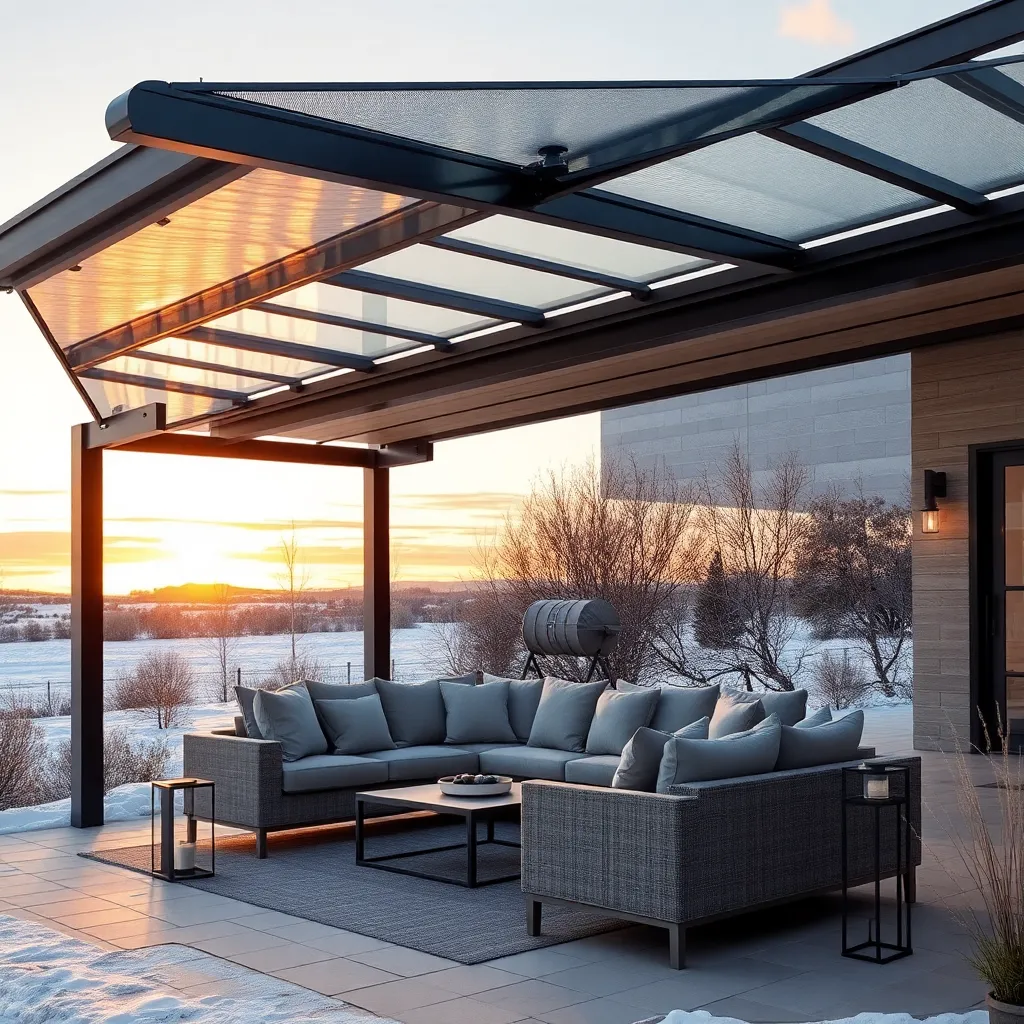
For those seeking flexibility and style, exploring retractable roof options can transform your patio into a versatile outdoor space. These roofs allow you to enjoy the sunshine on warmer days while providing protection from winter elements when necessary. Consider materials like aluminum or polycarbonate for durability and weather resistance. Motorized systems offer convenience, enabling you to adjust the roof with ease, while manual systems can be a cost-effective solution for budget-conscious homeowners.
When designing a retractable roof, focus on integrating elements that complement your existing outdoor decor. Choose neutral colors or natural wood finishes to seamlessly blend with your environment. For advanced customization, consider integrating smart home technology, allowing you to control the roof via smartphone apps. Ensure the structure is sturdy and properly anchored to withstand winter winds, and consult with a professional to ensure the design meets local building codes. With thoughtful planning, a retractable roof can enhance your patio’s usability year-round.
Designing for Snow Load Resistance

For homeowners in snowy regions, designing an outdoor shelter with snow load resistance is crucial. Start by choosing materials that can withstand heavy snow, such as steel or reinforced aluminum, which provide robust support. Opt for a roof with a steep pitch, ideally between 30 to 45 degrees, to ensure snow slides off easily. This simple adjustment can significantly reduce the risk of structural damage and minimize maintenance efforts.
Incorporating advanced design elements can further enhance snow load resistance. Consider installing a truss system for additional support, distributing weight more evenly across the structure. For an added layer of security, use a water-resistant membrane beneath the roofing material to prevent moisture buildup. Regularly clear accumulated snow to maintain the integrity of your shelter, especially in the case of unexpected heavy snowfall. These techniques ensure your patio roof remains safe and functional throughout the winter months.
Integrating Heating Elements Efficiently
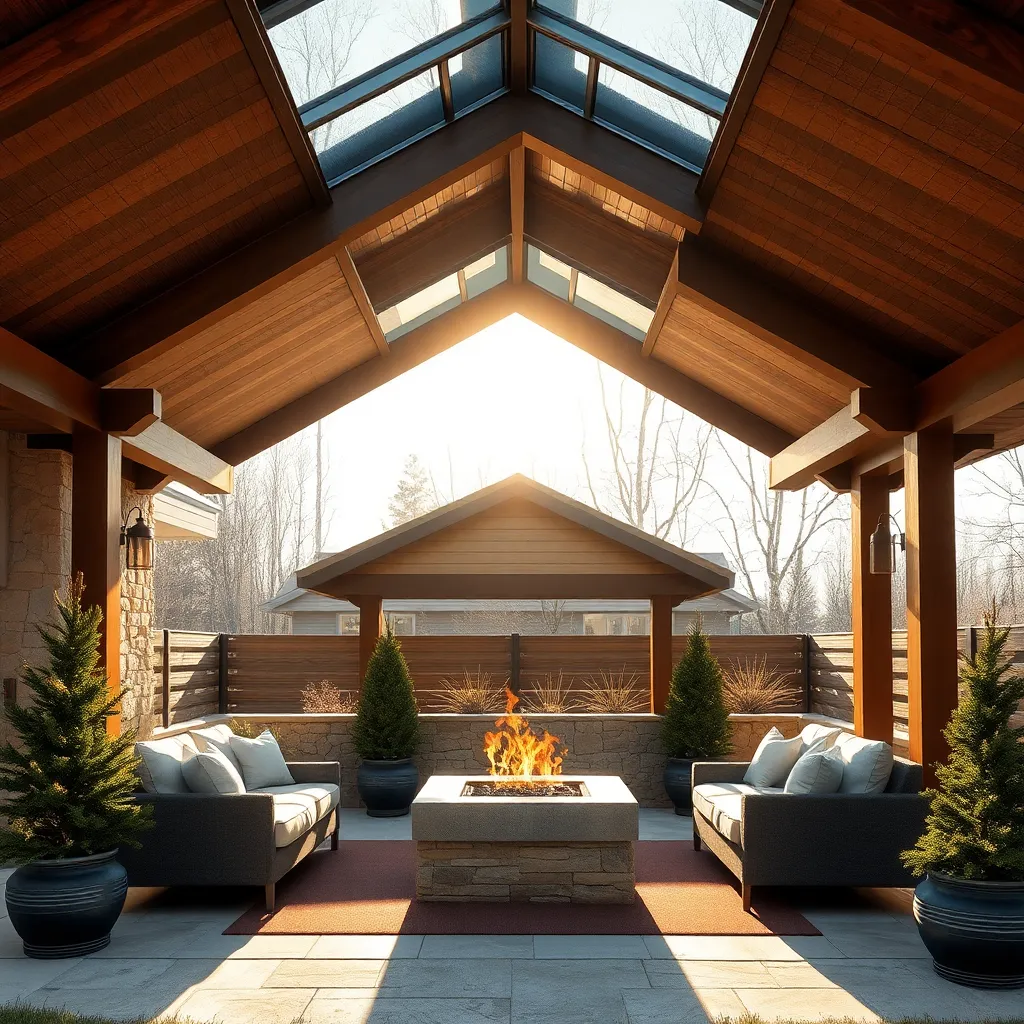
To efficiently integrate heating elements into your patio design, start by selecting the right type of heater for your space. **Mounted infrared heaters** are an excellent choice as they provide targeted warmth without occupying floor space. **Electric heaters** are generally easier to install and safer for enclosed areas, while **propane heaters** offer more mobility and higher heat output, making them ideal for larger, open patios. Ensure your heater is weather-resistant and rated for outdoor use to maintain efficiency and safety.
When planning heater placement, consider the **height and angle** to maximize heat coverage and comfort. Ideally, mount heaters at least **7 to 9 feet above** the ground for optimal heat distribution. Use a **heat-resistant mounting bracket** to ensure stability and safety. For more advanced setups, integrate heaters with **smart controls** that allow you to adjust settings remotely, offering convenience and energy efficiency. Always consult a professional for installation to adhere to local building codes and ensure safe operation.
Maximizing Natural Light in Winter
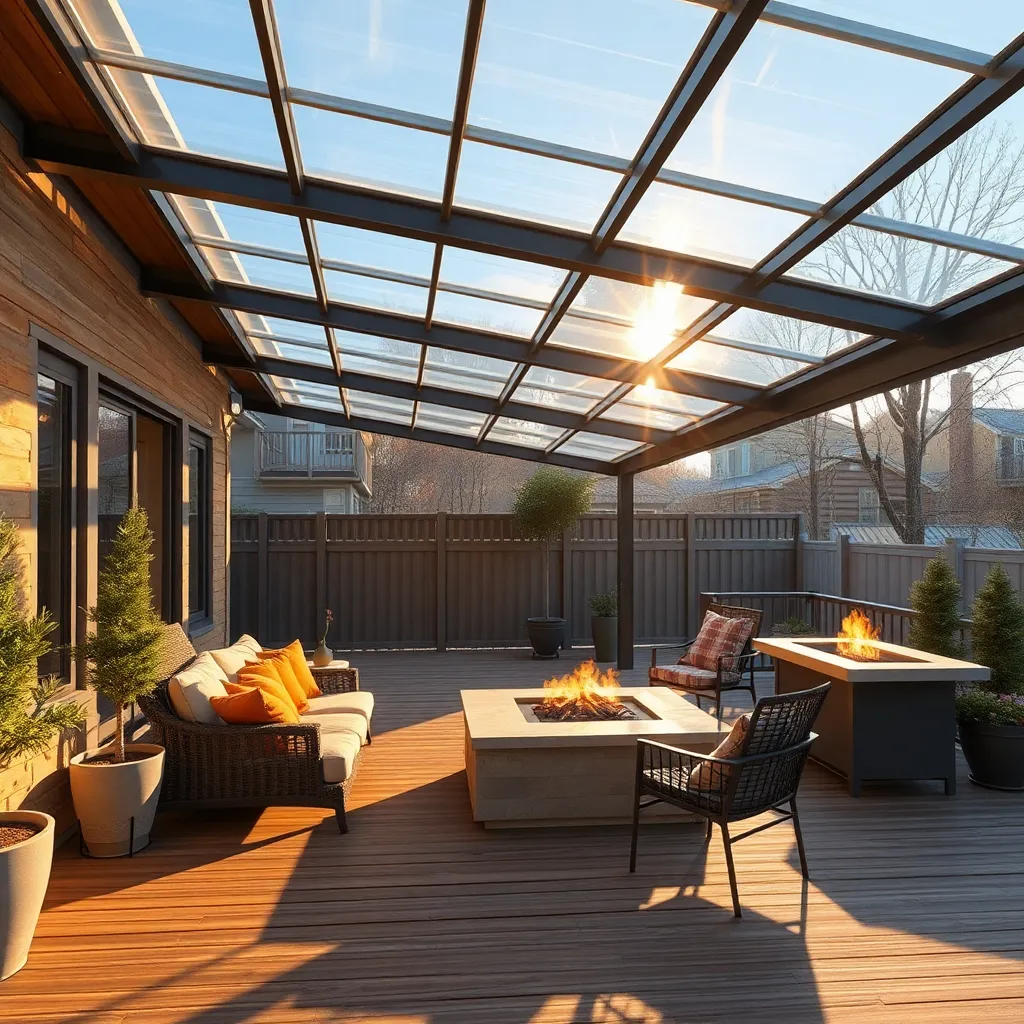
To maximize natural light during winter, consider using transparent roofing materials such as polycarbonate or glass panels. These materials allow sunlight to filter through, keeping the patio bright and warm even on cloudy days. Positioning your patio roof to face south can also help capture maximum sunlight. For those in colder climates, double-glazed glass can provide insulation while still allowing light to penetrate, reducing heat loss and maintaining a comfortable environment.
For a more advanced approach, implement a louvered roof system that adjusts to the sun’s angle, optimizing light exposure throughout the day. This design allows you to control the amount of light and warmth that enters, providing flexibility according to weather conditions. Additionally, incorporating reflective surfaces, such as light-colored patio flooring or walls, can help bounce natural light around the space, enhancing brightness. These strategies not only improve light but also create a cozy, inviting winter retreat right in your backyard.
Seamlessly Blending Indoor-Outdoor Spaces
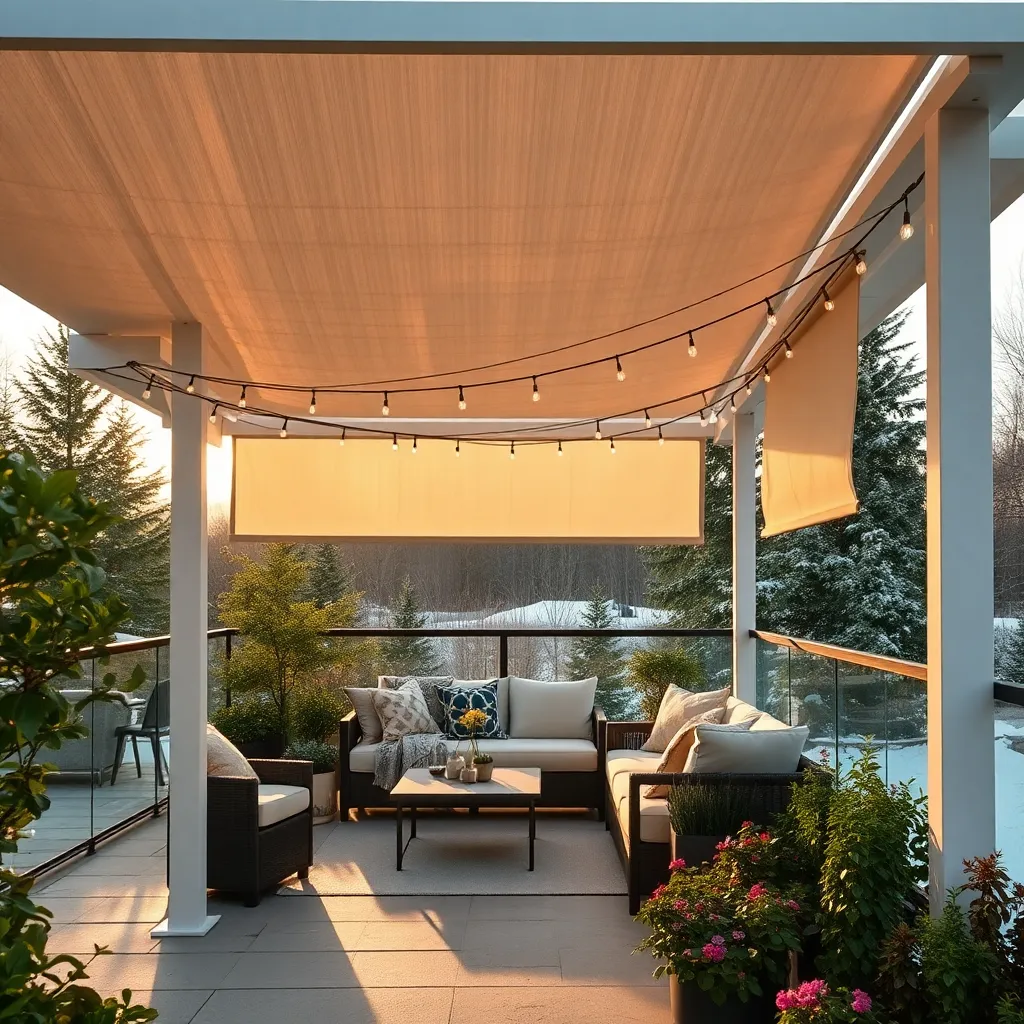
Creating a seamless transition between indoor and outdoor spaces can enhance your patio’s usability during winter. Consider using materials like glass or polycarbonate for your patio roof; these allow natural light while providing insulation against colder temperatures. Incorporating sliding glass doors or bi-fold systems can further blend the spaces, offering flexibility to open up or close off the area as needed. This approach not only maximizes light but also maintains a cozy indoor feel when the doors are closed.
For a more advanced design, integrate heating elements and weather-resistant furnishings to make the space functional year-round. Radiant floor heating or overhead infrared heaters can keep the area warm without intrusive installations. Use durable materials like teak or rust-resistant metals for outdoor furniture that can withstand winter conditions. These enhancements ensure that your outdoor area remains comfortable and inviting, encouraging more time spent in your seamlessly blended indoor-outdoor living space.
Adding Windproof Enclosure Features

To ensure your patio roof design can withstand strong winter winds, consider integrating windproof enclosure features. Start by using heavy-duty materials like polycarbonate or tempered glass panels, which offer excellent wind resistance while maintaining visibility. For a more flexible option, install retractable screens that can be secured during blustery weather and stowed away when not needed. Pay attention to the framing as well; reinforced aluminum or steel structures provide sturdy support and minimize the risk of damage.
Enhance your enclosure by adding weather-stripping around doors and windows to seal out drafts. This simple addition can significantly improve the comfort of your outdoor space. For advanced weatherproofing, consider incorporating a double-roof system that provides an extra layer of protection against wind and moisture. Ensure that all fasteners are rust-resistant and securely anchored to prevent loosening over time. By implementing these strategies, you’ll create a cozy, windproof outdoor retreat that stands up to winter’s harshest conditions.
Enhancing Comfort with Cozy Additions
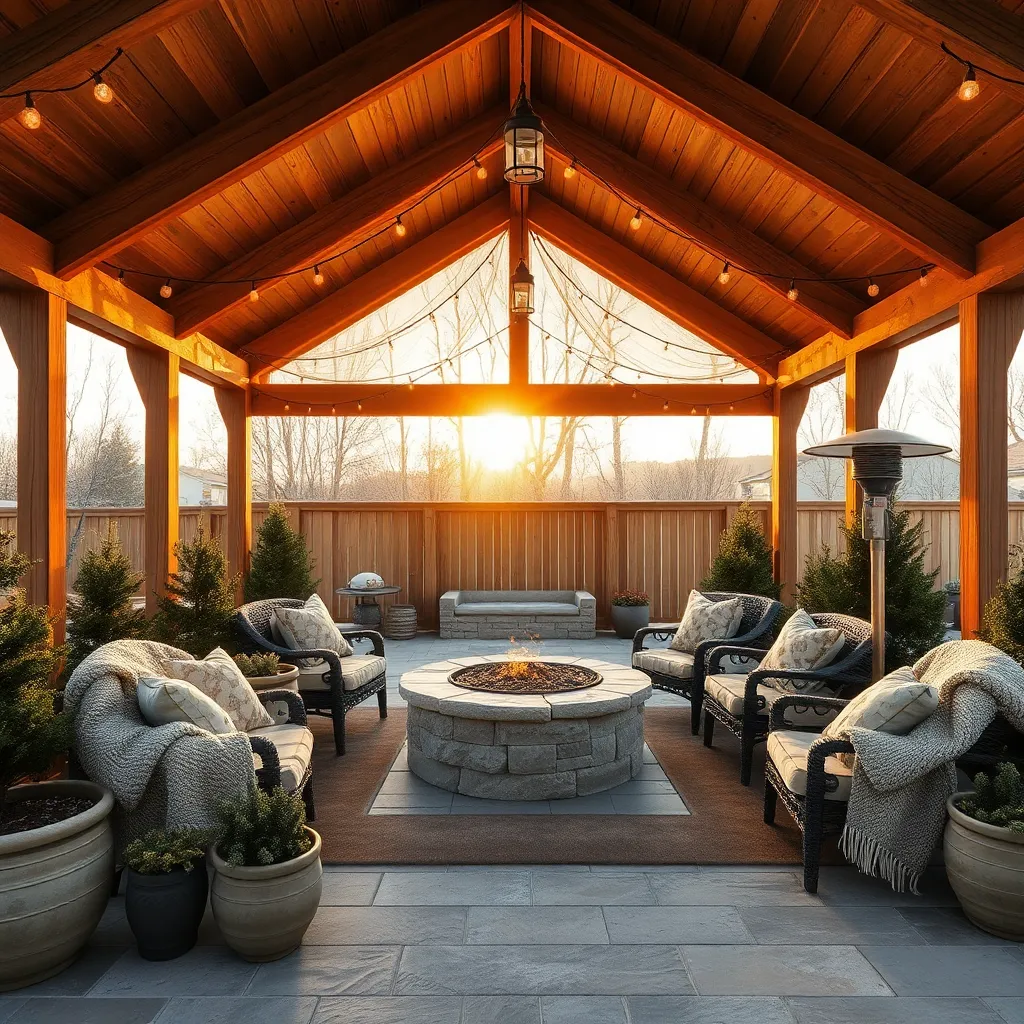
To enhance comfort on your winter patio, consider integrating cozy additions that blend functionality with warmth. Start by incorporating outdoor heaters such as infrared heaters or propane-powered patio heaters, which can provide consistent warmth without overwhelming your space. Position heaters strategically around seating areas to maximize their effectiveness, ensuring a pleasant atmosphere even on chilly days. For a creative touch, heated flooring can be installed under stone or tile surfaces to keep feet warm and comfortable.
In addition to heating, add soft textiles to create a welcoming environment. Use weather-resistant throw blankets and cushions made from materials like solution-dyed acrylic or polyester, which can withstand moisture and retain color. To elevate the coziness, string LED lights around the edges of your patio roof to offer a gentle glow that enhances nighttime ambiance. For advanced homeowners, consider installing motorized retractable screens, which can be adjusted based on the weather, providing both privacy and additional warmth when needed.
Planning for Easy Winter Maintenance

To ensure your patio roof design is winter-ready, consider using materials like polycarbonate panels or metal roofing, which are both durable and low-maintenance. These materials can withstand heavy snow loads and resist water damage, making them ideal for harsh winter climates. For beginners, a simple sloped roof design will allow for snow and rain to naturally slide off, reducing the need for constant cleaning.
Experienced DIYers might explore adding gutter systems to efficiently channel water away from the patio and prevent ice buildup. Incorporating a slight overhang in your design can also shield the edges of your patio from snow drifts.
- Use snow guards to manage heavy snow slide-off.
- Regularly inspect and clear gutters to avoid blockage.
By planning ahead, you can enjoy your outdoor space with minimal winter upkeep.
Conclusion: Creating Beautiful Outdoor Spaces
In exploring the ’10 Winter-Proof Patio Roof Designs,’ we’ve delved into key concepts that mirror the foundational elements of strong relationships. Just as each roof is crafted for protection against harsh winters, relationships thrive on reliability, adaptability, and enduring warmth. From the sturdiness of a gabled roof to the versatility of retractable canopies, these designs remind us of the importance of support, flexibility, and shared joy in our partnerships. We also discussed the aesthetic harmony of materials, highlighting the role of appreciation and understanding in nurturing bonds.
Now, take a moment to reflect on which of these concepts resonate most with your relationship. Consider implementing a small change today—whether it’s initiating a heartfelt conversation or planning a cozy joint activity that reinforces your connection.
As a next step, save this article to revisit these insights and apply them as you fortify your relationship, ensuring it withstands life’s seasons. Remember, with each thoughtful action, you’re not just preserving a connection but also paving the way for future relationship success. Your journey toward a stronger partnership is just beginning, and these designs are your blueprint for lasting love. Bookmark this guide now and empower your relationship to flourish year-round.



